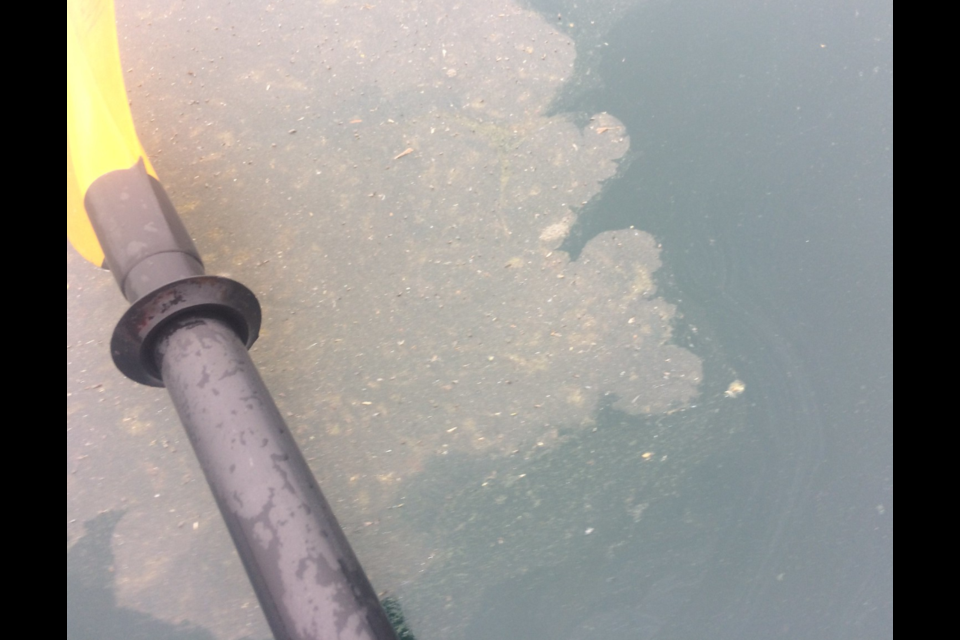THUNDER BAY — The discovery of blue-green algae in a bay east of Thunder Bay last fall is believed to be the first documented case on the Canadian side of Lake Superior.
Blue-green algae may contain toxins that pose a health hazard.
It showed up on several inland lakes in the Thunder Bay region last summer, prompting public advisories from the Thunder Bay District Health Unit.
The discovery on Lake Superior was made by a boater and a kayaker on Sept. 19 and 20, about 35 kilometres east of the city.
Officials with knowledge of the incident say they aren't familiar with the precise location, but area residents refer to two areas involved as East Bay and North Bay.
The kayaker collected a sample of the green substance which was sent to Lakehead University for identification.
A lab test confirmed it was dominated by cyanobacteria, also known as blue-green algae.
A second test at the university identified toxins in an amount that was lower than the Ontario threshold for drinking water.
Details of the incident are contained in an online article published by Infosuperior.com.
"The evening of Sept. 19, a boater noticed green patches stretching far out into the open waters of the lake. The boater noted water temperature at 15 C. The next morning marked the third day of unusually calm conditions and a kayaker noted the same unfamiliar site: patches of green on the surface of Superior's water," the article states.
The substance was first observed in a small bay, but it continued into the open waters of the lake "to at least a couple of miles from shore."
According to the article, by late afternoon "a surface scum covered the entire inshore area of the bay to approximately 50 metres from shore. A thick line of dark scum, perhaps a foot in width and less than a foot from the water's edge, ran along the sand on the bay's shoreline."
However, by the morning of Sept. 21, clear water returned to the area. "Beach sand was clean and there was no sign of the scum," the article notes.
Samuel Pegg of Lakehead University coordinates the Remedial Action Plan, a government-supported program that addresses environmental impairments on Lake Superior.
He said to RAP's knowledge there has never been a previous documented finding of blue-green algae in Canadian waters.
There have been recent cases, however, on the American side of the lake, including a large occurrence between Duluth and the Apostle Islands in 2018.
"It is something to be aware of...With the possibility of climate change, there may, in the future, be additional blooms in inland lakes, and the larger lake as well," Pegg told Tbnewswatch.
Government environment and health agencies were notified about the bloom near Thunder Bay, but since it had dissipated, the province's environment ministry was unable to take an independent sample for lab testing.
Nathan Wilson, a PhD candidate who analysed the sample at Lakehead, has been investigating the development of local algae blooms.
He said it was "pretty surprising" to find one in Lake Superior.
Wilson noted that the water temperature was relatively warm at the time, and the lake had been calm for a couple of days prior.
"That kind of allows for the perfect conditions for it to accumulate there, but it still is surprising to see it in Superior," he said.
Last year the Thunder Bay District Health Unit advised the public about blue-green algae blooms at four inland lakes. Tests showed toxins were either not present or below the Ontario drinking water standard.
Members of the public who find blue-green algae anywhere in Ontario are advised to contact the Spills Actions Centre at 1-866-MOETIPS.
